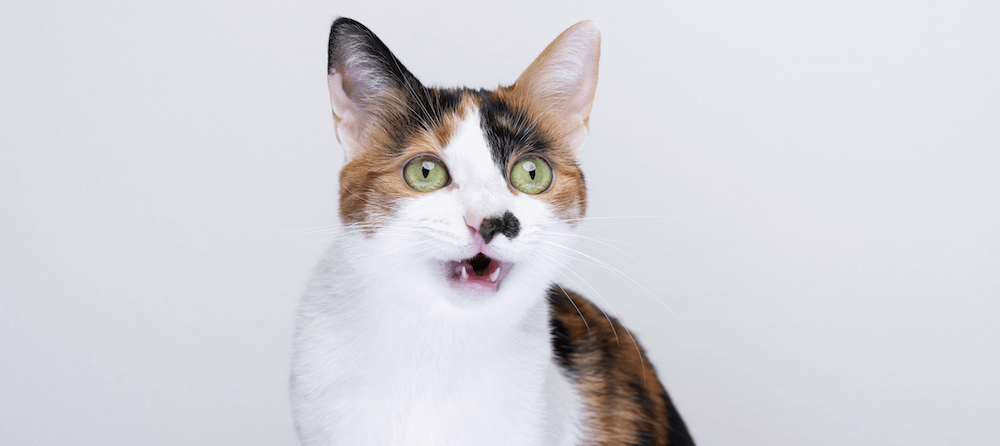Of course, it goes without saying that any cat health check performed at home is no replacement for regular wellness visits. Your vet is paws down your cat’s best health expert, and NOTHING should take his place. But, in between annual or bi-annual vet visits, learning to check your cat’s vital signs is one of the best ways you can stay on top of his health.
Why not leave it all to the vet? Well, unfortunately for cat parents, you can’t rely on your kitty to give you any obvious signals if he’s feeling a little under the weather. Charming and irresistible as it is, a cat’s typical air of independence and mystery has a serious down side when it comes to kitty’s health. Cats are masters at masking signs of pain or sickness. By the time you notice that something is wrong, a condition that started out small may have progressed into a much more serious problem!
Thankfully, though, there are ways to monitor your kitty’s health so that you can catch the early signs that he’s hiding from you. Checking your cat's vital signs can give you a baseline from which to gauge his general health and a way to check up on him if you ever suspect that there’s a problem. The more information you can provide to your vet, the better!
How to Check You Cat's Vital Signs at Home
Respiratory Rate
Respiratory rate refers to how many times your cat takes a breath in a minute. You can check this simply by observing him and counting the number of times you see his sides move in and out. Or, you could place your hands on his sides so that you can feel them as he takes each breath. It's usually easier to do this at a time when your cat is standing, but relaxed. There's no need to count for a full minute—you can count the number of breaths he takes in 15 seconds and multiply it by 4.
A healthy respiratory rate for a cat is between 20 and 30 breaths per minute. If your cat is breathing rapidly or if he appears to be panting when he hasn't just been playing vigorously, this is something your vet needs to know.
Heart Rate
Chances are that you've probably checked your own heart rate at least a few times. Checking your cat's heart rate isn't really that different. Simply locate his pulse and the beats for a full minute (or count for 15 seconds and multiply by 4). A good pulse point for a cat is located on the left side, just behind his front leg. If you time it right (when your cat is relaxed and snuggled up next to you enjoying some cuddle time) then he probably won't even notice what you're doing and will be much less likely to object.
A healthy pulse for a cat is between 140 and 220 beats per minute. For cats who have been resting, it should be on the lower end of that range. If your cat's heart rate is too slow, too fast, or irregular, this is cause for concern and should be checked by your vet.
In addition to checking your cat's vitals, there are a few other things you can check up on to give you an overall picture of his health. Click here for a free checklist that tells you how to keep tabs on your kitty's health with a 5-minute monthly check-in.
The time between vet visits is, unfortunately, still plenty long for new problems to crop up and escalate. Given that cats are so good at masking illness, pain, and discomfort, by the time you see visible signs, the issue may be well advanced and costly or impossible to resolve. Early intervention by your vet because of your watchfulness could easily be the key to keeping your favorite feline happily purring at your side for many years to come.
Temperature
Most vets will tell you not to attempt to take your cat's temperature, and to let the vet do this instead. But, if you are a capable medical personnel, the easiest way to take your cat's temperature is probably to use the kind of thermometer that can be inserted into his ear. There are even ear thermometers designed especially for pets! However, if you don't have an ear thermometer, you can still take his temperature the old-fashioned way.
If you choose to take your cat's temperature rectally, be warned--this is definitely a two person job! No cat that I've ever met would willingly submit to having something inserted into his tail end, so you'll want one person to hold kitty while someone else does the temperature taking. After lubricating the end, insert it about 1 or 2 inches. If you're using a digital thermometer, it will beep when it has reached an accurate temperature. Otherwise, leave it in place for about 2 minutes.
If you're expecting your cat's temperature to be the same as yours, you're in for a surprise! The purr-fect feline temperature is between 100 and 102.5 degrees Fahrenheit. If your cat's temperature is much higher or lower than this, you should call your vet.
Guest post by Kristen Levine Pet Living, the place for stories, science & advice for living happier and healthier with pets.




